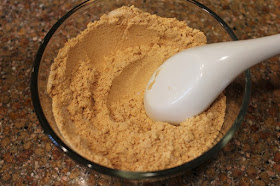Koizumi Reset Hair Brush KBE-2811 コイズミ リセットブラシ
Can be purchased at many electric stores, Donki, Tokyu Hands in Japan.
 |
| Koizumi Reset Hair Brush KBE-2811 |
Reset Hair Brush has been also featured as the best selling beauty product in many Japanese beauty magazines. It has so many positive reviews on Amazon Japan, and many people review that it makes hair shiny and beautiful without heat. Some people say that their hair texture has changed by using this hair brush.
Scalp Care
You can massage your scalp with its platinum brushes, which also give your scalp cool feeling.
Remove Hair Static
While brushing your hair with Reset Hair Brush, it removes static in your hair. It makes your hair shiny and beautiful.
 |
| Koizumi Reset Hair Brush KBE-2811 |
This YouTube video shows that it also works for hair wigs.
Magnetism : 2000 Gauss
Sonic Vibration : 6000 per minute
 |
| Koizumi Reset Hair Brush KBE-2811 |
 |
| Koizumi Reset Hair Brush KBE-2811 |
 |
| Koizumi Reset Hair Brush KBE-2811 |
・Only use for dry hair.
・Two AAA batteries
 |
| Koizumi Reset Hair Brush KBE-2811 |
These are my entries you might like.
♥The Best Japanese Shampoo And Conditioner Won Beauty Awards in Japan - Kao Asience Meguri
♥The Best Japanese Shampoo & Conditioner
♥5 Best Japanese Deep Conditioning Hair Masks
♥The Best Japanese Hair Dryer, Panasonic Nano Care Hair Dryer
♥2 Best Japanese Hair Dryers
♥Top 5 Life-Changing Japanese Beauty Products
♥10 Best Japanese Beauty Products on Amazon Japan, You Can Also Purchase Them at Drugstores in Japan
♥7 Best Japanese Beauty Products 2016 Hall of Fame
♥The Most Popular Facial Sheet Masks in Japan
♥Top 7 Japanese Facial Sheet Masks That Rescue Your Dry Skin
♥3 Best Japanese Sunscreen Products to Try This Summer
♥Top 5 Japanese Sunscreen Products
♥Top 5 Most Popular Japanese Charcoal Soap
♥4 Reasons Why I Love Kose Softymo Cleansing Oil
♥Two Important Things You Should Know to Wash Your Face - Japanese Beauty Secrets!
♥Top 3 Daiso Beauty Products
♥Popular Japanese Facial Cleansing Products - What I Want to Buy in Japan
♥5 Best Japanese Facial Lotion (Toner), Kesyou-sui
My entries related to Best Japanese Beauty Products can be seen here.
My entries related to Japan can be seen here.
My entries related to beauty can be seen here.
My entries related to Japan Haul can be seen here.
You can find my beauty entries by categories from here.





































